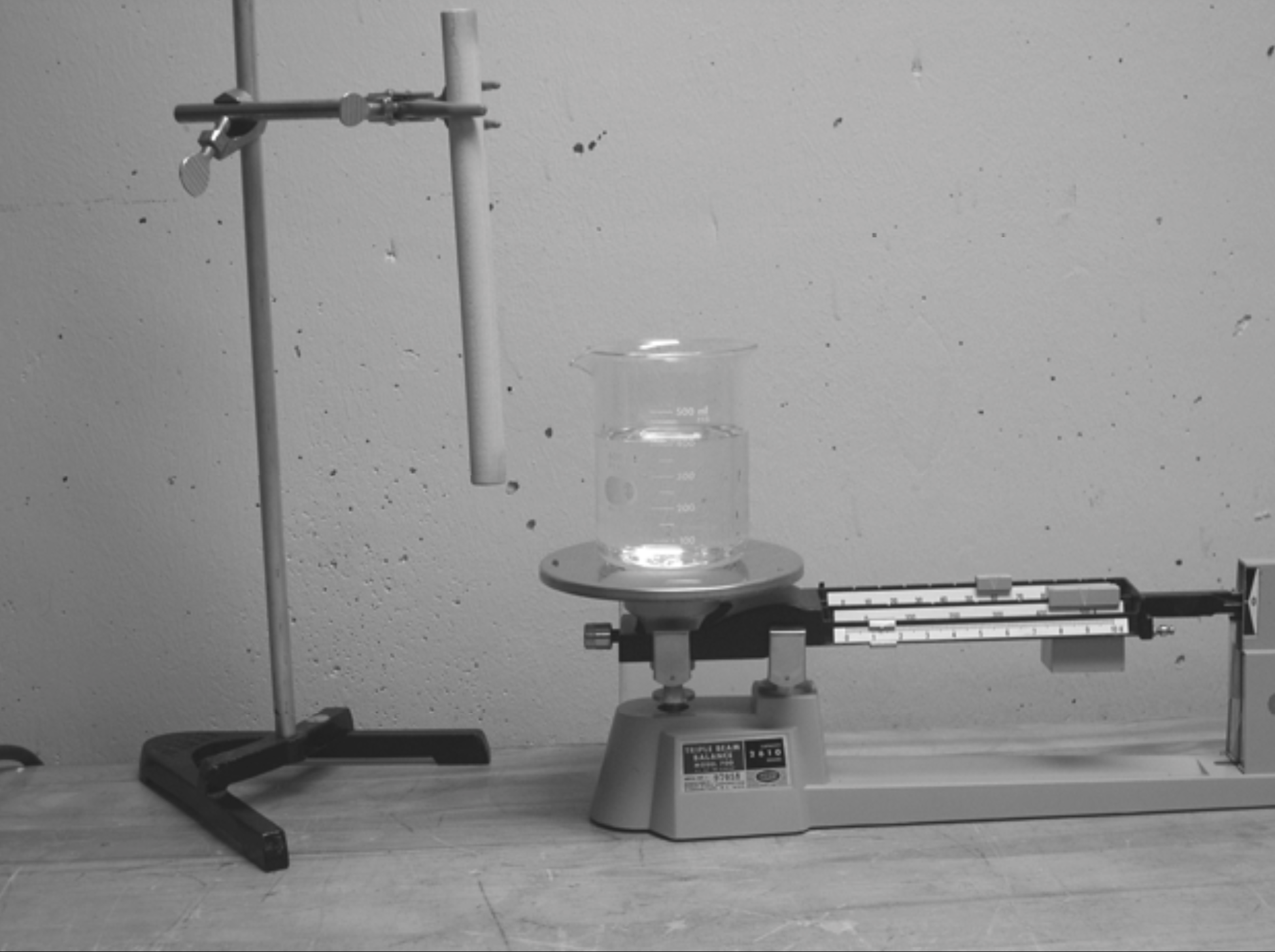Buoyancy and Newton’s Third Law of Motion
November 01, 2011 Filed in:
Demo CornerErnie McFarland University of Guelph
elm@physics.uoguelph.ca
This article is excerpted from Physics in Canada, Volume 61, No. 2, (2005), pg. 87-89, with permission of the Canadian Association of Physicists (CAP).
In recent years the active engagement of students in physics classes has become increasingly common, especially with the publication of Eric Mazur’s book “Peer Instruction” (Prentice Hall, 1997). A frequently used format is to pose a multiple-choice question, and ask the students to discuss the question in small groups and vote on the possible answers by a show of hands or computerized remote-control technology (“clickers”). This basic approach can be used with a question about the possible outcomes of a lecture demonstration. The instructor shows the demonstration apparatus and states what will be done with it, but does not perform the demonstration nor indicate what the result will be. Students discuss the possible outcomes and vote on them, and then the demonstration is completed to show what actually happens, and the relevant physics is discussed.
Figure 1 shows the apparatus for one of my favourite demonstrations using this technique. A beaker of water is balanced on a triple-beam balance sitting on a table, and the mass of the beaker and water is noted. Beside it is a vertical wooden dowel attached to a retort stand also sitting on the table. The bottom of the dowel is at a vertical level below that of the water surface, as shown. The question is: what will happen to the balance if the dowel and stand are picked up, moved sideways and then downward, so that the bottom end of the dowel is now submerged in the water? The dowel will still be attached to the retort stand, which will again be sitting on the table. Will the apparent mass, as indicated by the balance, of the water + beaker + submerged dowel be greater than, equal to, or less than the previously noted mass of just the water and beaker? This particular demonstration almost always produces a roughly equal split between the three possible answers, even if the audience consists of professional physicists! What do you think will happen to the apparent mass?




Figure 1: The apparatus: a wooden dowel attached to a retort stand, and a beaker of water on a pan balance.
The answer: the apparent mass, as indicated by the balance, of the water + beaker + submerged dowel is greater than the mass of just the water and beaker. The physics: Archimedes’ principle states that the water exerts an upward buoyant force on the dowel, and by Newton’s third law of motion, the dowel must therefore exert a downward force on the water. This additional downward force is transmitted to the balance pan. Another way to think about this is that as the dowel is submerged in the water, the water level rises, and hence the pressure exerted by the water on the bottom of the beaker increases.
Column Editor: Ernie McFarland, Physics Department, University of Guelph, Guelph, Ontario, N1G 2W1 Tags: Forces


